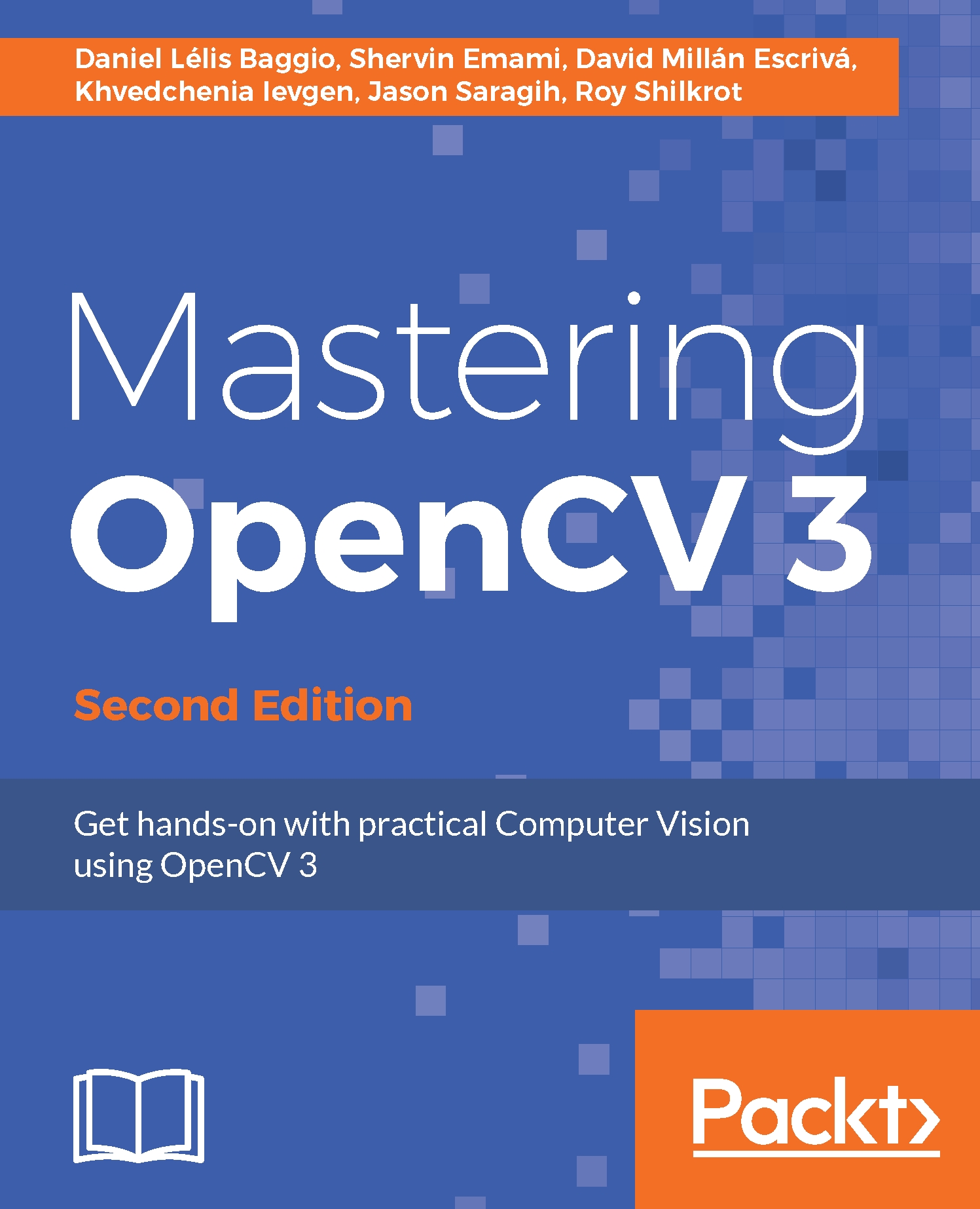-
Book Overview & Buying

-
Table Of Contents

Mastering OpenCV 3 - Second Edition
By :

Mastering OpenCV 3
By:
Overview of this book
As we become more capable of handling data in every kind, we are becoming more reliant on visual input and what we can do with those self-driving cars, face recognition, and even augmented reality applications and games. This is all powered by Computer Vision.
This book will put you straight to work in creating powerful and unique computer vision applications. Each chapter is structured around a central project and deep dives into an important aspect of OpenCV such as facial recognition, image target tracking, making augmented reality applications, the 3D visualization framework, and machine learning. You’ll learn how to make AI that can remember and use neural networks to help your applications learn.
By the end of the book, you will have created various working prototypes with the projects in the book and will be well versed with the new features of OpenCV3.
Table of Contents (7 chapters)
Preface
 Free Chapter
Free Chapter
Cartoonifier and Skin Changer for Raspberry Pi
Exploring Structure from Motion Using OpenCV
Number Plate Recognition using SVM and Neural Network
Non-Rigid Face Tracking
3D Head Pose Estimation Using AAM and POSIT
Face Recognition Using Eigenfaces or Fisherfaces
